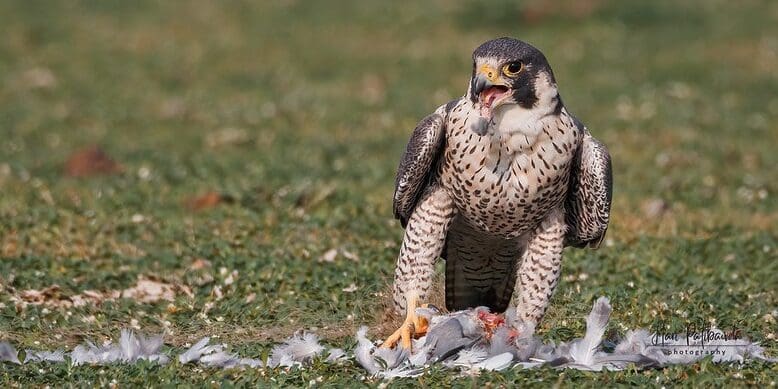A tale of a plucky masters student, resources wasted, and how lack of follow up means valuable lessons from large conservation projects can be lost…
This blog was written by Professor Julia Jones, Professor in Conservation Science, Bangor University (and temporary visitor with the Conservation Evidence Group).

The Conservation Evidence database does a brilliant job of summarizing information on the impact of conservation actions and making it available to conservation practitioners. However, evidence can only be synthesized if it exists. This is why it is so important for more tests of conservation actions to be done, and for the results to be made public.
In the journal Ecological Solutions and Evidence, colleagues and I report on our evaluation of an effort to eradicate invasive red swamp crayfish from an ecologically important site in Malta [1]. The project failed to eradicate crayfish. However, no post-project monitoring was built into the project and without the interest and tenacity of a masters student, Alex Carauna, the lessons from this failure would have been lost.
The notorious American red swamp crayfish (Procambarus clarkii) is native to southern USA and north-eastern Mexico, but has been introduced to at least 40 countries around the world [2]. There have been many efforts to eradicate them [3]. The Conservation Evidence database, for example, summarizes the evidence for six actions which have been attempted; though the evidence of effectiveness for most is limited.
Invasive crayfish were first identified in Malta in 2016 and there was concern about its ecological impacts on Fiddien Valley System (also known as Chadwick Lakes). A major ecological restoration was initiated with 4.2 million euros in funding from the European Regional Development Fund which included efforts to eradicate the crayfish through mechanical excavation. The mud from the stream bed and the banks was dug out to destroy the crayfish’s burrow network as well as remove live individuals. This was taken by trucks to a disused quarry where the heat and lack of water would kill the crayfish.

The restoration project finished in 2020, but there was no endline or follow-up monitoring to check whether the eradication was a success.
Alex Carauna, a Maltese ecologist, had been temporarily employed on the project before beginning his masters degree. He really wanted to know if the project had been a success. Therefore as part of his masters degree at Bangor University he decided to visit the site and document whether it had worked. No baseline data on crayfish numbers before the eradication attempt was available, and there was no meaningful control which could be studied because the eradication happened in the only valley the species was known to have a substantial population in. Therefore an after-only study was the only design open to us.
When Alex surveyed the Fiddien Valley System it was obvious that the eradication attempt had failed, and crayfish were still found in abundance throughout the restored area as well as 4 km downstream.

The eradication could have failed for two reasons. First, it’s highly unlikely that every crayfish had been removed during the restoration as rubble walls and other structures offered potential refugia, and parts of the restoration area were not accessibly by the diggers. Secondly, re-invasion could have easily occurred from crayfish outside the restoration area.
There is an important applied lesson from this simple study for those looking to eradicate crayfish: mechanical excavation seems unlikely to work. Once invasive crayfish have become established, they are extremely difficult to eradicate so the focus should be on avoiding introductions in the first place.
Our study also highlights an important lesson about not letting the perfect be the enemy of the good. Our study uses a simple ‘after only’ design because we did not have any data from before the eradication programme and no appropriate comparator sites were available. However, we would argue that our design is still adequate to answer our research question: Did mechanical excavation eradicate invasive crayfish?
As Bill Sutherland, the founder of Conservation Evidence, always says, conservation needs to move to a place where we are doing ‘more of what works and less of what doesn’t work’. For this, we need more well-documented case studies on the outcomes of conservation projects, regardless of whether they were successful or not. The Conservation Evidence group in Cambridge are doing brilliant work with practitioners, inspiring them to do more tests of interventions. Both the Conservation Evidence Journal and Ecological Solutions and Evidence are great venues to publish such results.
References / Further reading
[1] Caruana A., Camilleri B., Farrugia L. & Jones J.P.G. (2024) Mechanical excavation of wetland habitat failed to eradicate invasive American red swamp crayfish (Procambarus clarkii) in Malta. Ecological Solutions and Evidence, 5, e12325. https://doi.org/10.1002/2688-8319.12325
[2] Oficialdegui F.J., Sánchez M.I. & Clavero M. (2020) One century away from home: how the red swamp crayfish took over the world. Reviews in Fish Biology and Fisheries, 30, 121–135. https://doi.org/10.1007/s11160-020-09594-z
[3] Gherardi F., Aquiloni L., Diéguez-Uribeondo J. & Tricarico E. (2011) Managing invasive crayfish: is there a hope? Aquatic Sciences, 73, 185–200. https://doi.org/10.1007/s00027-011-0181-z
We have also produced a report, ‘Assessment of Red Swamp Crayfish Presence, Distribution And Abundance Within The Fiddien Valley System’, containing all the collected data (also available on GitHub) and additional images, available at Applied Ecological Resources.



